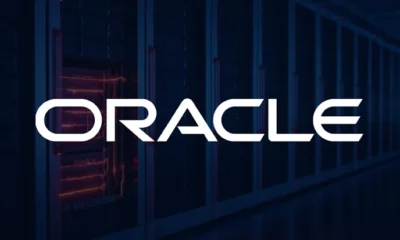Inovation
Solving the End-of-Life Software Dilemma: A Comprehensive Approach

Challenges of Replacing End-of-Life Software: A Comprehensive Discussion
In a recent interview, Matt Middleton-Leal, Managing Director EMEA North and South at Qualys, delves into the complexities surrounding the replacement of end-of-life software and offers insights on how to effectively manage these challenges.
Surprisingly, outdated software remains prevalent in our daily lives. The Guinness World Records recognizes the SABRE airline booking system and the IRS tax record systems as the oldest software still in continuous use since their inception in the early 1960s.
The Persistence of Older Software Systems
When software reaches a point where it is no longer supported or provided with security updates, it is deemed ‘end of life’. A notable example is the Microsoft Windows operating system, where older versions are phased out as newer ones are introduced, leaving them vulnerable to security threats.
Statistics from StatCounter reveal that while Windows 11 and Windows 10 dominate the market share, older versions like Windows 8, Windows 7, and even Windows XP are still in operation, despite their lack of support and updates.
The reluctance to upgrade to newer software versions can stem from various reasons, including the original developer no longer being available, cost considerations, or the inherent complexity of updating certain systems without disrupting essential business processes.
Strategies for Managing End-of-Life Software
Research conducted by Qualys highlights that a significant portion of known vulnerabilities are associated with outdated and unsupported software, underscoring the risks posed by continuing to use such systems. Effective management of end-of-life software necessitates a security-focused approach to asset management, encompassing thorough asset identification, ownership assignment, and risk assessment.
Tracking the lifecycle status of software installations, from availability to end-of-life, is crucial for proactive migration planning and upgrades. Additionally, conducting a comprehensive assessment of the potential impact of maintaining end-of-life software versus the cost of migration is essential for informed decision-making.
Addressing the Challenges of Decommissioning End-of-Life Software
One of the primary obstacles in replacing end-of-life software lies in critical applications that are integral to revenue generation. The fear of downtime and revenue loss often deters organizations from implementing necessary changes, despite the inherent risks associated with maintaining outdated systems.
However, strategic planning and leveraging scheduled downtime windows can facilitate the gradual transition to updated systems without disrupting essential operations. By identifying vulnerabilities, implementing targeted countermeasures, and quantifying the potential business impact, companies can mitigate the risks associated with end-of-life software effectively.
Embracing a Forward-Thinking Approach to Software Replacement
As all software inevitably reaches the end of its lifecycle, organizations must adopt a proactive approach to software replacement to avoid dependency on outdated systems. By calculating the monetary impact of potential security breaches and framing the risks in business terms, companies can garner support from leadership for necessary upgrades.
Ultimately, reducing reliance on end-of-life software and planning ahead for software replacements can enhance organizational resilience and security posture in the ever-evolving digital landscape.
-

 Video Games2 days ago
Video Games2 days agoTekken 8: Rise of the Shadows
-

 Amazon2 days ago
Amazon2 days agoNeil Young Takes a Stand: Pulling Music from Amazon in Protest of Jeff Bezos’ Support for Trump
-

 Tech News2 days ago
Tech News2 days agoSamsung Galaxy UI 8: Embracing the Big Free AI Upgrade
-

 Video Games1 day ago
Video Games1 day agoGoku Takes on the Dragon Ball FighterZ Arena
-

 Security2 days ago
Security2 days agoCritical Vulnerability Exposed: Oracle EBS Targeted in Recent Cyber Attacks by Cl0p Hackers
-

 Microsoft2 days ago
Microsoft2 days agoEnhanced Copilot Features: Creating Office Documents and Gmail Integration
-

 Microsoft2 days ago
Microsoft2 days agoMicrosoft Launches Free Copilot Tools for Washington State Schools: Navigating the AI Learning Debate
-

 Apple2 days ago
Apple2 days agoExploring the Dystopian Realms of Pluribus: An Apple Original Series Trailer































